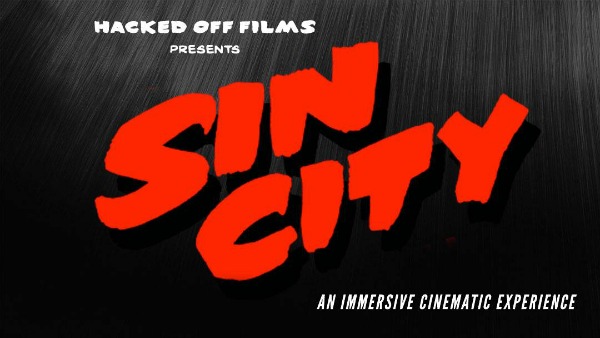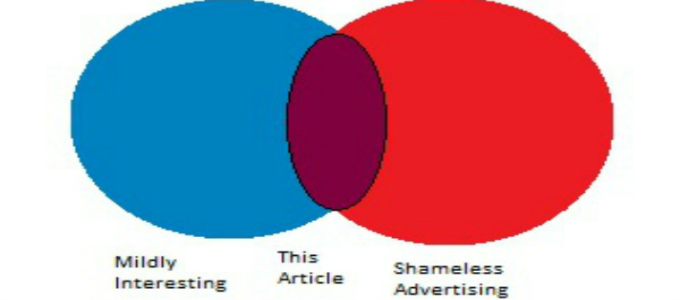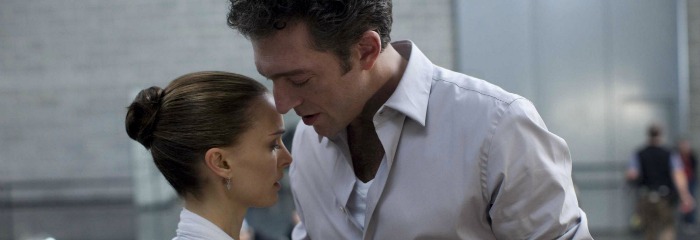Hi Edd fans, it’s Edd here. You may remember me from such films as ALIEN VS EDDITOR 2: REQUIEM or EDDY, I SHRUNK THE KIDS. The safe-haven of the CFF blog may be behind us, but that doesn’t mean we can’t have nonsensical fun, right? As my dad always used to say, dogs aren’t just for Christmas, and directionless waffle isn’t just for film festivals … though he did say this mid-festival, so it may have just been waffle.
So the more attentive Edd fans among you will have noticed that I, like Batman, Superman, and Edward Norton in FIGHT CLUB, live a double life. By day I am the Take One editor and writer of mediocre ability and terrible humour you have all come to tolerate; by night I am a founder and producer of mediocre ability and terrible humour for immersive screening group Hacked Off Films – also (just about) tolerated. I’ve been asked to write a little bit about my extra-curricular pursuits, something I’m not normally immensely keen to do. Inevitably, this article will fall somewhere between mildly interesting and disgustingly shameless self-promotion (for more details consult the Venn Diagram above). For this I apologise in advance.
“So, what is Hacked Off Films?” I hear nobody say. Hacked Off Films is an Oxford-based film screening company. Founded by myself and the vastly more talented and affable Owen Donovan, Hacked Off has specialised in immersive film events and short film screenings – the former being more relevant on this occasion. Beginning by showing Future Short’s packages in the upstairs of a restaurant-come-charity across the road from our university rooms, we have now grown and expanded, producing four immersive film events, the final of which was formed in partnership with the National Trust’s London Lates project. Our fifth event, SIN CITY: AN IMMERSIVE CINEMATIC EXPERIENCE, opens November 2nd (plug, plug, plug).
Every period had a very specific intended effect, manipulating different approaches.
If you are sitting there thinking, ‘Why is this big idiot, saying big things about this big nothing ‘Immersive Cinema’? I don’t even know what that is!,’ you would not be alone – you may even be in the majority. Immersive cinema is a new artform. Combining film, theatre, dance, music and sometimes even food, immersive cinema aims to surround the audience with the world and atmosphere of the chosen film before, during and after the screening itself. Pioneered by London-based group Secret Cinema, the emerging medium has exploded in the last two years, Hacked Off one of a number of up-and-coming projects hoping to push the boundaries even further.
One of the most engaging and intriguing elements to immersive cinema is its almost limitless freedom – both for production managers and audience members. Immersive cinema (and to a lesser extent immersive theatre) is an art-form for which the rulebook is yet to be written. What can one do? How far can the immersion be taken? Where does the film and its interpretation begin and end? All these are questions constantly posed to everyone involved in immersive cinema, but, significantly, often overlooked or taken for granted. Why? Because there is no precedent to follow or look to.
Let me put this in terms of an example. Hacked Off’s third immersive project, BLACK SWAN, was both straight-forward and very complex. The event was held in The Keble O’Reilly, one of the largest student theatres in Oxford, the audience beginning in the upstairs bar area. Split into a number of sections – black tie reception, back-stage corridors, entrance into screening room, the film itself – with the audience progressing chronologically through each. Every period had a very specific intended effect, manipulating different approaches.
httpvh://vimeo.com/66395035
Beginning with the black-tie reception, Nina was announced as the Swan Queen. The choreographed scene was directly lifted from the original film, the audience playing the crowd watching actors (the lovely Tristan Mora and Nick Davies) perform the roles of Natalie Portman and Vincent Cassel at the announcement. The direct transposition of cinema to ‘real life’ acting is, in some ways, the most unambiguous of immersive interpretations of a film, the audience quite literally a part of the reconstructed film, playing a role (that of the black-tie reception attendees) in the BLACK SWAN’s recreation.
Following this scene the application of immersive cinema became more complicated. Released subsequent to the announcement of Nina, the audience flood down the back-stairs of The Keble O’Reilly. Tinted in red and occupied by aggressive and combative ballet dancers resplendent in leotards, the audience make their way through the narrow corridors of the theatre posing as backstage to an opening night performance, witnessing the staged arguments and fights of the supposed players and crew of the production about to be put on. The objective is clear – the creation of the claustrophobia and anxiety central to the tone of BLACK SWAN. However, the means of achieving this are, in a manner, unconventional (if there was a convention to follow).
voyeuristically watching their tantrums and mayhem whilst being ignored by the instigators of these fueds
The arguments of the actors and crew in the backstage area differ from the black-tie reception in the position of the audience. Having been included in the speeches and revelry Nina’s introduction, the attendees are simultaneously within and without in the back alleys of the theatre. Packed into the red-lit dressing rooms, the claustrophobia derives from the awareness of the actors and other onlookers that surround one. Yet, simultaneously the audience is now separated from the scenes created by the arguing crew, voyeuristically watching their tantrums and mayhem whilst being ignored by the instigators of these fueds – the actors continuing in their performance as if the observing crowd that cricles them does not exist. The sense of exclusion adds to the anxiety of the audience, aware they are witnessing something they should not.
But what are they witnessing? Part of the complexity of these scenes lie in their origin. None of the arguments or their instigators are drawn from BLACK SWAN, the spats improvised by the unnamed actors. Although arguably related in tone and setting, there is nothing in these back-stage moments that directly connects them to the film from which the event derives its name. How then do we categorise these moments? If an immersive cinema production departs from its source material, we have to some extent evaluate the relation between the two.
As I have said, in tone and intent there are similarities between what is on screen and what is created theatrically. However, as anyone who has studied literature, theatre or film studies will tell you, these are highly subjective evaluations. What one person interprets from a film may, and often will be very different from another. How then does the producer of the immersive cinematic performance’s own opinion place or define itself in comparison to the original movie? If I’m honest I don’t know the answer – but it is certainly something that deserves further exploration. However, I’d like to pose a third and final question that relates more to our up-coming project SIN CITY: AN IMMERSIVE CINEMATIC EXPERIENCE.
Our BLACK SWAN event, although complex, was fairly linear and narrative. What is meant by this? All the audience (with the exception of two smokers who missed the middle sections) followed the same path, and witnessed the same events. Beginning in the champagne reception, every ticket-holder progressed down through the backrooms and out into the theatre where the film was screened.
Individuals can choose for themselves to go to a certain area and experience a certain set of staged performances
This kind of progression is not standard to immersive events – in fact, they may be in the minority. Many Secret Cinema events work with a far more open plan, the whole venue accessible to the audience. Individuals can choose for themselves to go to a certain area and experience a certain set of staged performances; or indeed elect to spend their time elsewhere, witnessing other plotted immersive devices; or maybe even just slide their way down to the bar, buying drinks until the night closes. There is no set progression for the night. Even if the producer had a conception of a single atmosphere or set of experiences in mind, they are at the will of the audience.
Without wishing to give too much away, it is in this style that SIN CITY: AN IMMERSIVE CINEMATIC EXPERIENCE will be structured. Across the two nightclubs – The Cellar and Purple Turtle – and their connecting alleyway, the audience will be free to roam and experience anything they can find. The possibilities are almost endless – “Walk down the right alley in Sin City and you could find anything …”
(If you have somehow enjoyed this ill-formed musing, hold tight! A longer and more expansive evaluation of immersive cinema and its forms is being produced for both Take One and Hacked Off Films closer to Christmas!)



